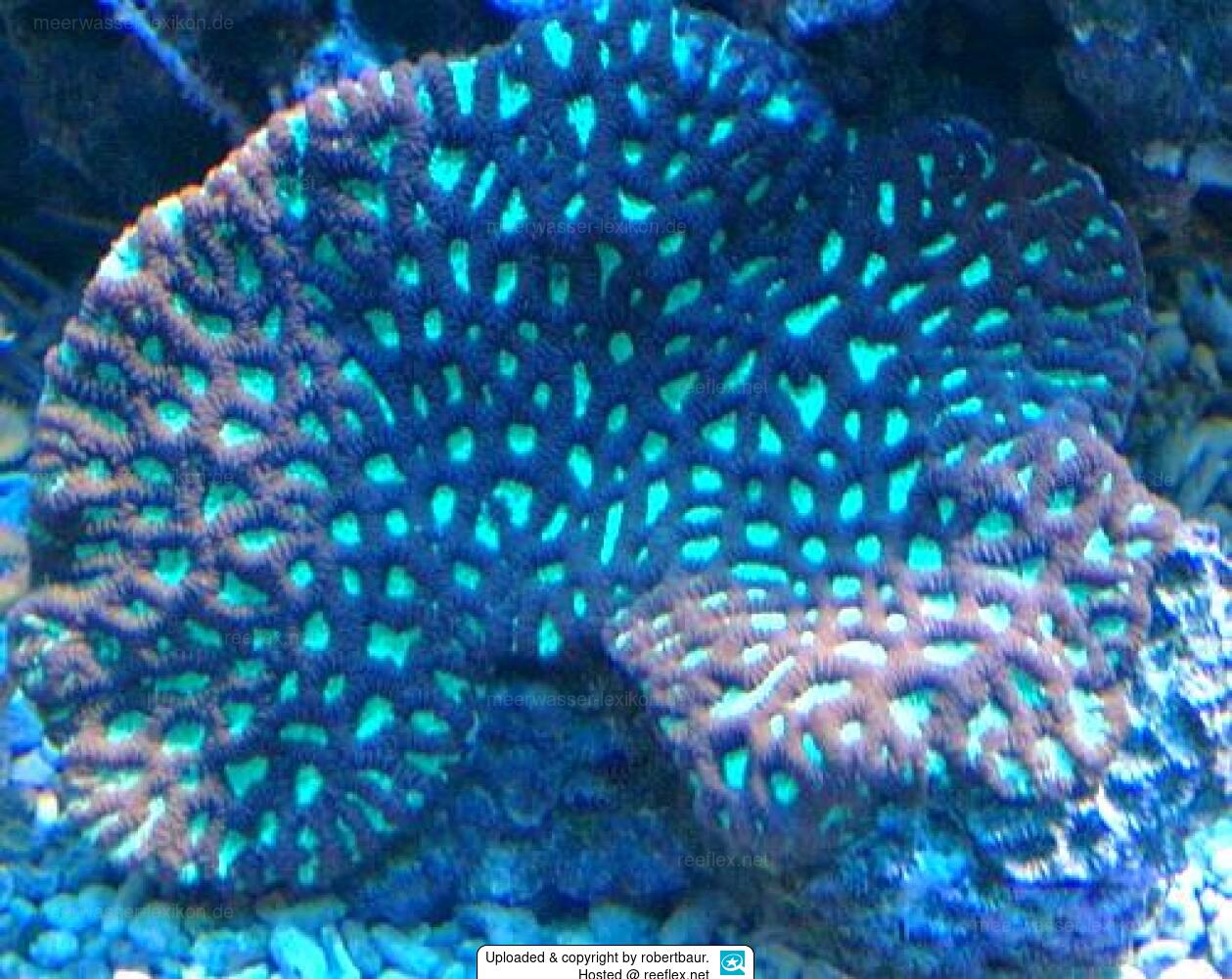Info
Favites melicerum, Veron, 2000
Description: Colonies are submassive to encrusting. Corallites are thick walled and rounded, becoming subplocoid. Septa are few in number, uniform in height and are usually in two (alternating) orders. Paliform lobes and columellae are well developed.
Color: Browns and greens, usually with contrasting walls and centres.
Taxonomic note and references: This is a new name for Favites melicerum as discussed by Wijsman-Best (1972) and Veron, Pichon and Wijsman-Best (1977). See ‘New species described in Corals of the World’ (Veron, in preparation) for further information. Source reference: Veron (2000).
Synonyms:
Astraea (Fissicella) melicerum Ehrenberg, 1834 · unaccepted > superseded combination (basionym)
Astraea melicerum Ehrenberg, 1834 · unaccepted > superseded combination (basionym)
Astrea melicerum Ehrenberg, 1834 · unaccepted > superseded combination (basionym)
Favites bestae Veron, 2000 · unaccepted > junior subjective synonym
Prionastraea melicerum (Ehrenberg, 1834) · unaccepted > superseded combination
Description: Colonies are submassive to encrusting. Corallites are thick walled and rounded, becoming subplocoid. Septa are few in number, uniform in height and are usually in two (alternating) orders. Paliform lobes and columellae are well developed.
Color: Browns and greens, usually with contrasting walls and centres.
Taxonomic note and references: This is a new name for Favites melicerum as discussed by Wijsman-Best (1972) and Veron, Pichon and Wijsman-Best (1977). See ‘New species described in Corals of the World’ (Veron, in preparation) for further information. Source reference: Veron (2000).
Synonyms:
Astraea (Fissicella) melicerum Ehrenberg, 1834 · unaccepted > superseded combination (basionym)
Astraea melicerum Ehrenberg, 1834 · unaccepted > superseded combination (basionym)
Astrea melicerum Ehrenberg, 1834 · unaccepted > superseded combination (basionym)
Favites bestae Veron, 2000 · unaccepted > junior subjective synonym
Prionastraea melicerum (Ehrenberg, 1834) · unaccepted > superseded combination







 robertbaur
robertbaur



















